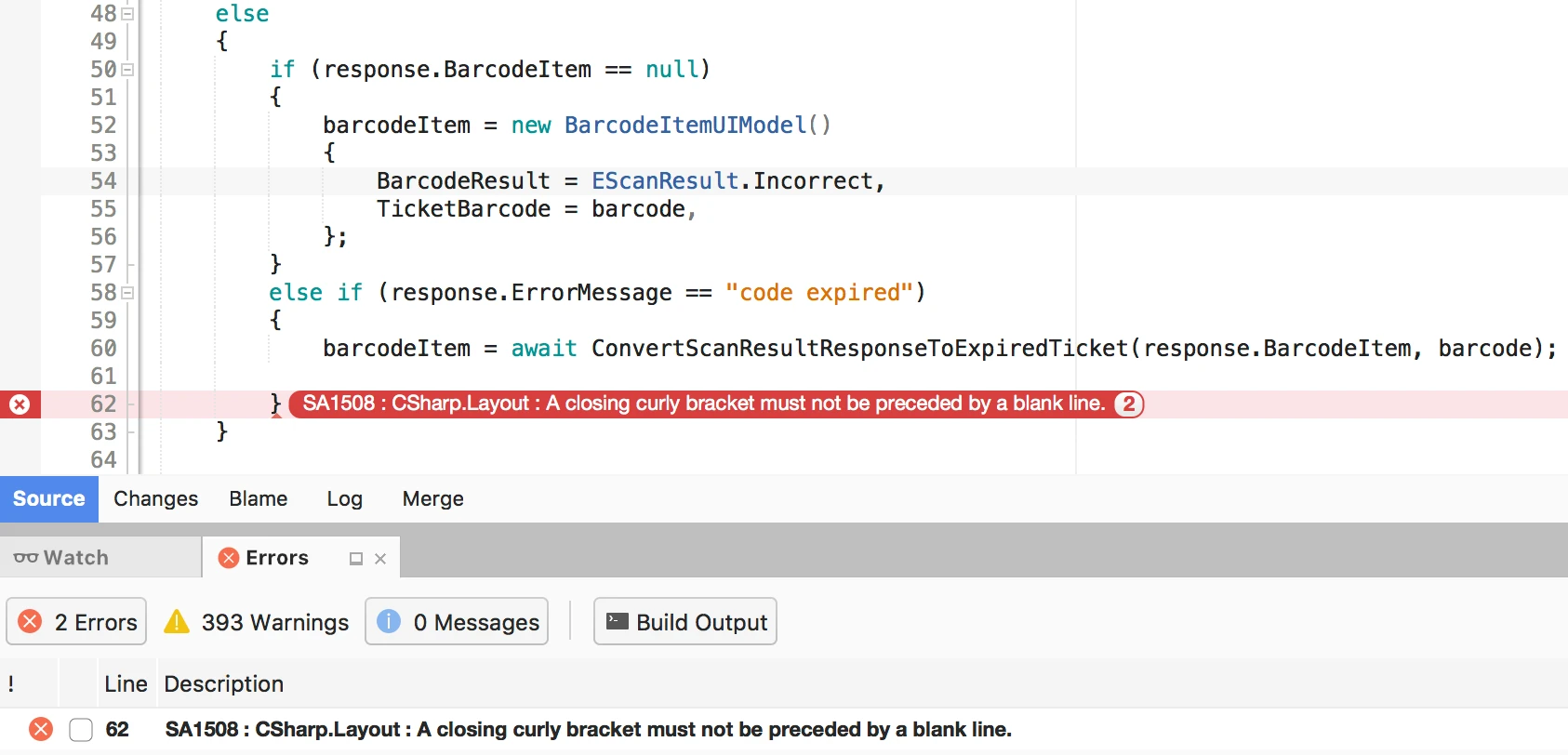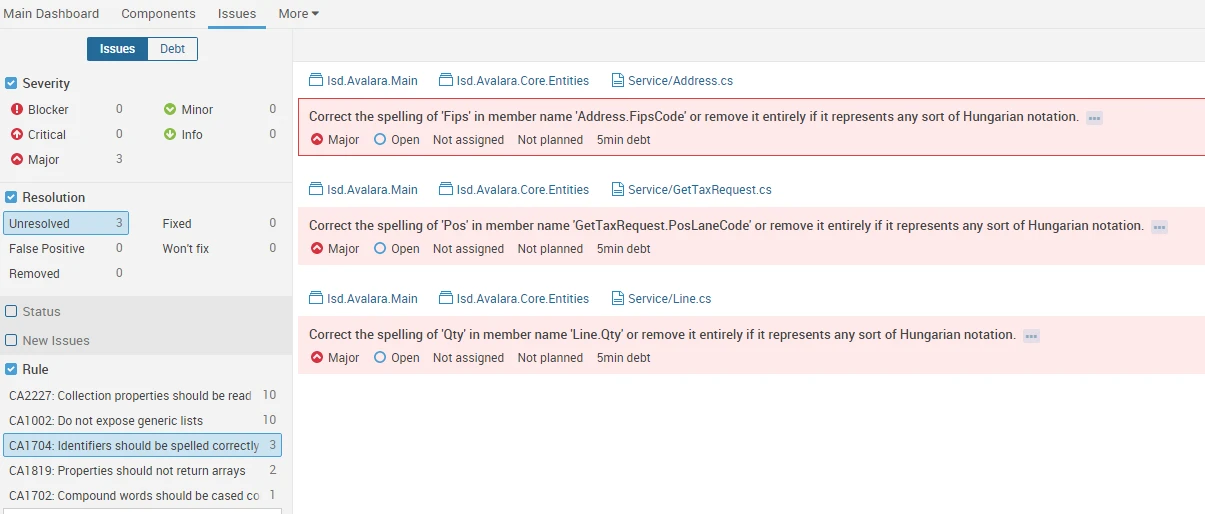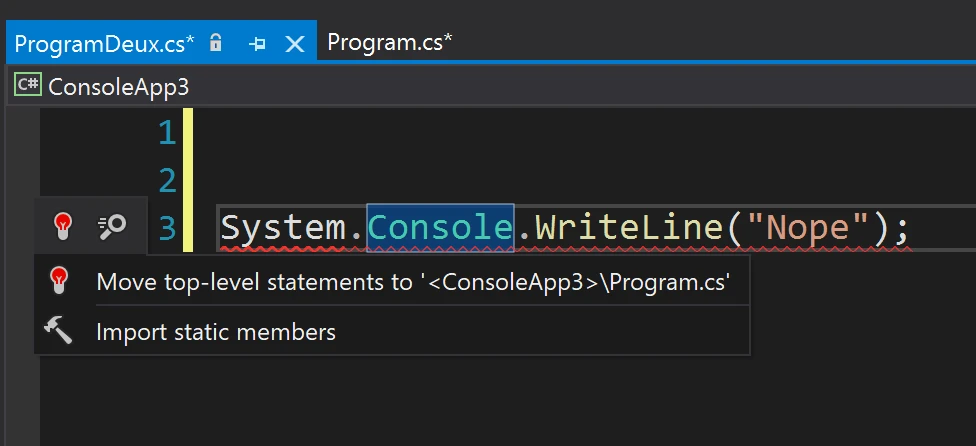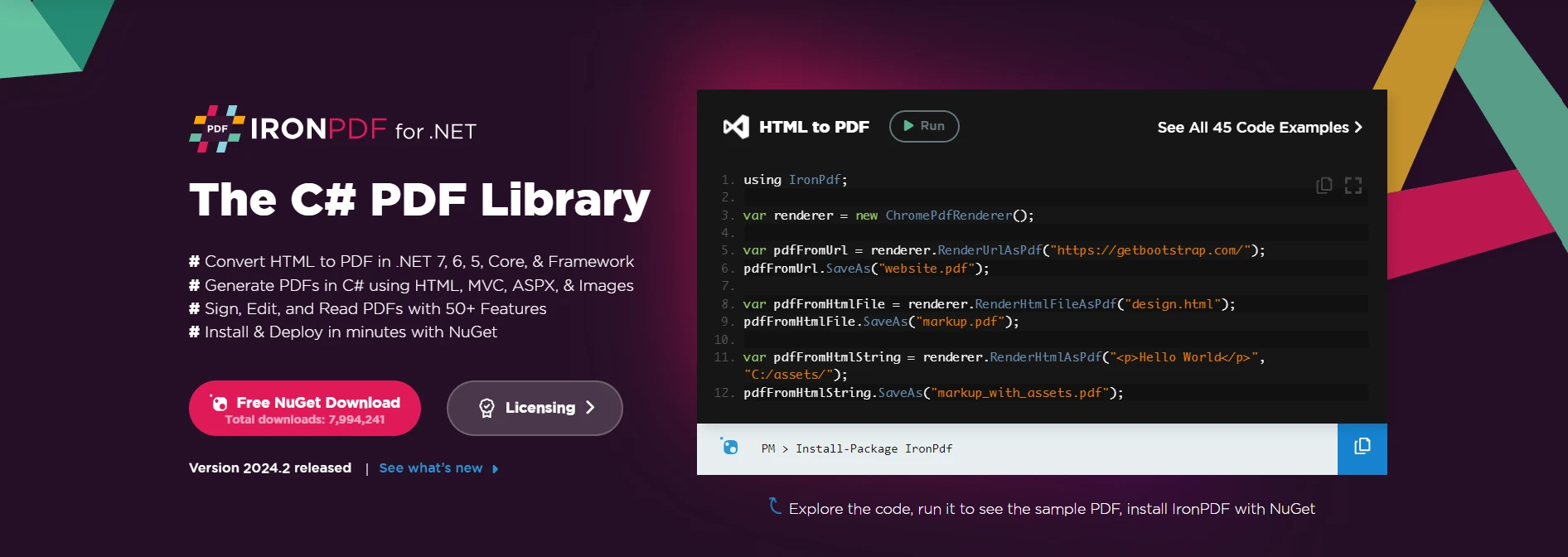Published March 7, 2024
C# Linter (How It Works For Developers)
Linters play a crucial role in modern software development by enforcing coding standards, identifying potential bugs, and enhancing code quality. Linter is simply a static code analysis tool which helps to improve the readability of the code along with fixing potentialsyntax errors, typos, and logical bugs before they cause runtime errors or unexpected behavior. In the robust development environment of C# programming, linters provide developers with tools to analyze and improve their code.
In this article, we'll explore the concept of C# linters, their significance, popular options, and how they contribute to writing clean and maintainable code.
Understanding C# Linters
A linter, short for code linter or static code analyzer, is a static analysis tool that examines source code for potential issues, adherence to coding standards, and style consistency. C# linters analyze code without executing it, offering insights into potential problems and areas for improvement.
By utilizing an editorconfig file, developers can establish consistent naming conventions, coding styles, and other rules across their source code, promoting a clean and uniform codebase. These tools, often integrated as .NET tools, automatically identify and address code issues, ensuring that the code adheres to predefined rulesets.
Linters support best practices by highlighting rule violations and providing automatic fixes, contributing to a more efficient and maintainable code base. Embracing linters in the development process helps mitigate technical debt, address build warnings, and ultimately foster a culture of clean code and adherence to best practices throughout the entire solution.
Key Functions of C# Linters
-
Code Quality Assurance: Linters identify common programming mistakes, potential bugs, and deviations from coding best practices.
-
Coding Standard Enforcement: Linters enforce coding standards and style guidelines, ensuring consistency across the codebase.
-
Security and Performance Analysis: Some linters can detect security vulnerabilities and performance issues, promoting robust and efficient code.
- Refactoring Suggestions: Linters may provide recommendations for refactoring to improve code maintainability and readability.
Popular C# Linters
Linters play a pivotal role in maintaining code quality and adhering to best practices in software development. Several linters are widely used in the C# development ecosystem, each offering unique features and integrations. Let's explore some notable options:
1. Roslyn Analyzers
-
Description: Part of the .NET Compiler Platform (Roslyn), this static DotNet format tool analyzer provides real-time feedback on code quality and adherence to coding standards.
-
Features:
-
In-depth static analysis of code issues.
- Integration with Visual Studio.
-
- Custom rule creation.
-

2. StyleCop.Analyzers
-
Description: A set of analyzers based on StyleCop, focusing on coding style and consistency in C# code.
-
Features:
-
Code Style settings enforcement.
- Integration with Visual Studio and MSBuild.
-
- Customizable rules and formatting tools.
-

3. SonarQube
-
Description: SonarQube is a comprehensive code quality platform that includes static code analysis for multiple languages, including C#.
-
Features:
-
Detection of bugs, security vulnerabilities, and code smells.
- Integration with CI/CD pipelines.
-
- Dashboard for tracking code quality metrics.
-

4. ReSharper
-
Description: ReSharper is a popular Visual Studio extension that provides code analysis, refactoring suggestions, and coding assistance.
-
Features:
-
Real-time code inspections.
- Code cleanup and refactoring tools.
-
- Unit testing assistance.
-

Integrating C# Linters into Development Workflow
Integrating C# linters into the development workflow ensures that code quality is continuously monitored and maintained. Here's a step-by-step guide:
-
Choose a Linter: Select a C# linter based on your project requirements, coding standards, and the features provided by the linter.
- Installation: Install the chosen linter through a package manager or an extension, depending on the tool. For example, Roslyn Analyzers are often included with the Visual Studio installation, while other tools may require additional setup. One such example is Resharper. You can download it from Visual Studio -> Extensions -> Manage Extensions:
-
Configure Rules: Customize linter rules to align with your project's coding standards. Most linters allow you to enable, disable, or configure individual rules to suit your needs.
- Integration with IDE: Integrate the linter with your integrated development environment (IDE). Many linters seamlessly integrate with popular IDEs like Visual Studio, providing real-time feedback and suggestions. ReSharper a popular linter provided by JetBrains, can easily be integrated to any version of Visual Studio IDE.

- CI/CD Integration: Integrate the linter into your continuous integration/continuous deployment (CI/CD) pipeline to enforce code quality checks as part of the automated build process.
Benefits of Using C# Linters
-
Consistent Code Style: Linters enforce coding standards, promoting a consistent code style across the project. This consistency enhances readability and collaboration among team members.
-
Early Bug Detection: By analyzing code statically, linters can identify potential bugs and issues early in the development process, reducing the likelihood of defects in the final product.
-
Improved Code Quality: Linters contribute to overall code quality by highlighting areas that need attention, refactoring suggestions, and potential optimizations.
-
Enhanced Developer Productivity: Real-time feedback from linters within the IDE helps developers address issues promptly, leading to increased productivity and faster development cycles.
- Maintainability and Scalability: Consistently adhering to coding standards and addressing potential issues identified by linters contributes to code maintainability and scalability over time.
Introducing IronPDF for C#
IronPDF is a powerful C# library designed to streamline the creation, manipulation, and rendering of PDF documents within .NET applications. This versatile tool empowers developers to generate PDFs from various sources, manipulate existing PDFs, and seamlessly integrate PDF functionalities into C# applications.

Understanding IronPDF Basics
IronPDF provides developers with a range of features to handle PDF-related tasks, making it an invaluable tool for applications requiring PDF generation, manipulation, and rendering.
Key Features
-
PDF Generation: Create PDFs from HTML, URLs, images, and other formats, offering flexibility in content creation.
-
PDF Manipulation: Manipulate existing PDF documents by merging, splitting, adding watermarks, and more.
-
HTML to PDF Conversion: Convert HTML content to high-quality PDFs while preserving styles and layouts.
- PDF Rendering: Display PDFs within C# applications, enabling users to view and interact with PDF content.
Getting Started with IronPDF
To incorporate IronPDF into your C# application, you can install the IronPDF NuGet package by adding the following command in the Package Manager Console:
Install-Package IronPdf
Alternatively, you can install the package "IronPDF" using the NuGet Package Manager. Among all the NuGet packages related to IronPDF, we may select and download the required package from this list.

Once installed, you can utilize IronPDF to perform various PDF-related tasks.
Generating a PDF from HTML
Creating a PDF from HTML is straightforward with IronPDF. Here's a basic example:
using IronPdf;
var htmlContent = "<h1>Hello, IronPDF!</h1>";
var pdfRenderer = new ChromePdfRenderer();
var pdf = pdfRenderer.RenderHtmlAsPdf(htmlContent);
pdf.SaveAs("output.pdf");using IronPdf;
var htmlContent = "<h1>Hello, IronPDF!</h1>";
var pdfRenderer = new ChromePdfRenderer();
var pdf = pdfRenderer.RenderHtmlAsPdf(htmlContent);
pdf.SaveAs("output.pdf");Imports IronPdf
Private htmlContent = "<h1>Hello, IronPDF!</h1>"
Private pdfRenderer = New ChromePdfRenderer()
Private pdf = pdfRenderer.RenderHtmlAsPdf(htmlContent)
pdf.SaveAs("output.pdf")OUTPUT

For more PDF-related functionalities in C# using IronPDF, please visit the code examples and IronPDF blog page.
Can C# Linters Be Used with IronPDF?
C# linters, such as Roslyn Analyzers, StyleCop.Analyzers, and others, focus on static code analysis and enforcing coding standards. They primarily inspect the source code for potential issues, style violations, and adherence to best practices.
IronPDF, on the other hand, is a library dedicated to PDF-related functionalities, and its integration with linters may not be direct. Linters typically operate at the source code level, analyzing the syntax, structure, and patterns in the codebase.
While C# linters may not directly analyze or enforce standards on the content generated or manipulated by IronPDF, they play a crucial role in ensuring the overall quality and consistency of the C# code that interacts with IronPDF.
Developers can leverage C# linters to maintain a clean and standardized codebase, addressing issues related to coding conventions, potential bugs, and style consistency. Combining the power of C# linters for code quality assurance with the capabilities of IronPDF for PDF-related tasks ensures a holistic approach to building robust and maintainable C# applications.
For more information on IronPDF and its complete functionality, please visit the official documentationand API Reference.
Conclusion
C# linters are indispensable tools in the toolkit of every C# developer, providing insights into code quality, adherence to standards, and potential improvements. Whether you choose Roslyn Analyzers, StyleCop.Analyzers, SonarQube, ReSharper, or another tool, integrating a linter into your development workflow is a proactive step towards writing cleaner, more maintainable code. Embrace the power of C# linters to elevate your coding practices and contribute to the overall success of your software projects.
In conclusion, while C# linters may not specifically target IronPDF-generated content, their use is complementary, contributing to the overall quality of the C# code base that incorporates IronPDF functionality. This combination ensures that developers can benefit from both the seamless PDF manipulation capabilities of IronPDF and the code quality assurance provided by C# linters.
IronPDF offers a free trial licensepage. Download the library from their websitelinkand give it a try.











